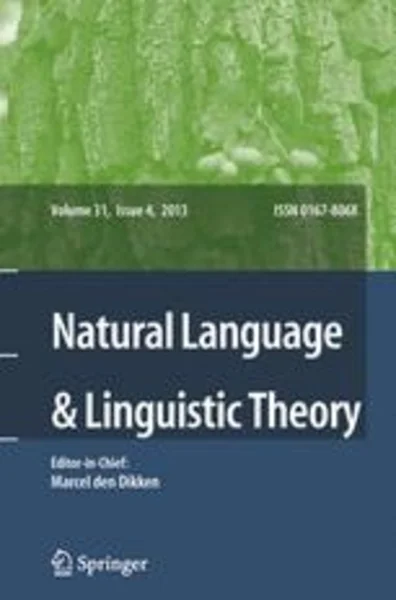-
direct evidentials, case, tense and aspect in tibetan: evidence for a general theory of the semantics of evidential
جزئیات بیشتر مقاله- تاریخ ارائه: 1392/03/01
- تاریخ انتشار در تی پی بین: 1392/03/01
- تعداد بازدید: 299
- تعداد پرسش و پاسخ ها: 0
- شماره تماس دبیرخانه رویداد: -
tibetan has three different morphemes expressing direct evidentiality. only two of the three have been described in any detail, and the distinctions among these morphemes are described in quite different ways by different authors. we argue that careful study of these morphemes reveals that evidentials do not encode evidence type per se. instead, they encode a relation between the situation being reported by the speaker and the situation within which evidence was acquired. this approach turns out not only to provide an accurate and systematic characterization of the different tibetan direct evidentials, but also to predict a number of seemingly unrelated restrictions on their syntactic distribution. the distribution of these direct evidentials hence provides strong support for the proposal of speas (2010) that evidentials of all categories encode relations among situations. since tibetan evidentials operate at the illocutionary level, our analysis further suggests that illocutionary force is best modeled not as a feature of situations per se, but rather as a relation between relevant situations.
مقالات جدیدترین رویدادها
-
استفاده از تحلیل اهمیت-عملکرد در ارائه الگوی مدیریت خلاقیت سازمانی و ارائه راهکار جهت بهبود
-
بررسی تاثیر ارزش وجوه نقد مازاد بر ساختار سرمایه شرکت های پذیرفته شده در بورس اوراق بهادار تهران
-
بررسی تأثیر سطح افشای ریسک بر قرارداد بدهی شرکت های پذیرفته شده در بورس اوراق بهادار تهران
-
بررسی تأثیر رتبه بندی اعتباری مبتنی بر مدل امتیاز بازار نوظهور بر نقد شوندگی سهام با تأکید بر خصوصی سازی شرکت ها
-
تأثیر آمیخته بازاریابی پوشاک ایرانی بر تصویر ذهنی مشتری پوشاک ایرانی (هاکوپیان)
-
ارزیابی الگوی قرارگیری مهاربندهای زانویی بر پاسخ سازه فولادی
-
بررسی مفاهیم پایداری و تحلیل آن در ساختمان های سبز
-
شبیه سازی عددی جریان توام و آرام و انتقال حرارت سیال در مجرا با انبساط ناگهانی
-
تعیین آزمایشگاهی ضریب دبی سرریز فیوزگیت قبل از واژگونی با افزایش جرم وزنه
-
(applied modeling of computational fluid dynamic for eco-lab concentration changes with sediment transport (case study shadegan lake
مقالات جدیدترین ژورنال ها
-
مدیریت و بررسی افسردگی دانش آموزان دختر مقطع متوسطه دوم در دروان کرونا در شهرستان دزفول
-
مدیریت و بررسی خرد سیاسی در اندیشه ی فردوسی در ادب ایران
-
واکاوی و مدیریت توصیفی قلمدان(جاکلیدی)ضریح در موزه آستان قدس رضوی
-
بررسی تاثیر خلاقیت، دانش و انگیزه کارکنان بر پیشنهادات نوآورانه کارکنان ( مورد مطالعه: هتل های 3 و 4 ستاره استان کرمان)
-
بررسی تاثیر کیفیت سیستم های اطلاعاتی بر تصمیم گیری موفق در شرکتهای تولیدی استان اصفهان (مورد مطالعه: مدیران شرکتهای تولیدی استان اصفهان)
-
بررسی یادگیری مشارکتی دانش آموزان
-
بهینه سازی تخلیه ساکنین در برج های بلند در شرایط اضطراری، با استفاده از پل های هوایی بین برج ها
-
نقش ویژگی های شخصیتی در پیش بینی ابراز هیجان خودآگاه و بازشناسی هیجانات چهره در دانش آموزان
-
iranian eocene green tuffs as natural pozzolan for use in cement industries
-
effect of corrugation angle and direction on the performance of corrugated steel plate shear walls




سوال خود را در مورد این مقاله مطرح نمایید :